Slanted FlyingJournal of Tai Chi Chuan
Training
Multiple Centers & Multiple Spheres in Taijiquan
Taijiquan (太極拳) practitioners sometimes think of the body as a cylinder, or as a single sphere with the center located at the lower dantien (丹田elixir field; the lower abdomen, the area centered in the waist), but there are numerous spheres that are important to understand. For example, the major joints in the body (i.e., the “nine pearl bends” [九曲珠 jiu qu zhu]) can be considered as spheres with their own centers.
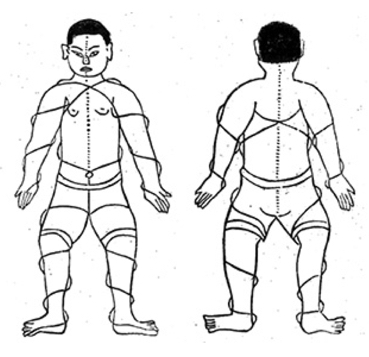 In the accompanying illustration from Chen Xin’s (陳鑫) book, notice how the qi (氣energy) reeling paths wrap around the wrists, elbows, shoulders, hips, knees and ankles. Depending on one’s interpretation of the nine pearl bends, these joints can represent six of the pearls (the other three could be viewed as the lumbar, thoracic and cervical curves in the spine).
In the accompanying illustration from Chen Xin’s (陳鑫) book, notice how the qi (氣energy) reeling paths wrap around the wrists, elbows, shoulders, hips, knees and ankles. Depending on one’s interpretation of the nine pearl bends, these joints can represent six of the pearls (the other three could be viewed as the lumbar, thoracic and cervical curves in the spine).
Practitioners should maintain stable centers in each of these joints, and the qi reeling paths around them can be seen as reflecting the ancient version of the Taijitu (太極圖) shown below.Yin (阴)and yang (阳)energies would cycle around the stabile center circle of the diagram. These individual spheres (pearls/joints) are all contained within the large sphere that is often viewed as having its center located at the dantien and encompassing the entire body.
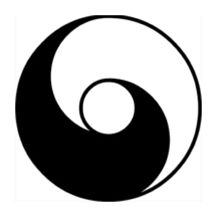 It may help in understanding the concept of the energy cycling around the joints, rather than through the centers of them, if one considers that the muscles that flex or extend the joints go around, rather than through, the joints. In addition to flexion and extension, combinations of muscles allow for rotation, especially in the wrists, ankles, shoulders and hips. Elbows and knees have less mobility and function more like hinges, but the ball joints at the roots of the limbs (the hips and shoulders) do allow for some limited rotation even in the middle of the limbs.
It may help in understanding the concept of the energy cycling around the joints, rather than through the centers of them, if one considers that the muscles that flex or extend the joints go around, rather than through, the joints. In addition to flexion and extension, combinations of muscles allow for rotation, especially in the wrists, ankles, shoulders and hips. Elbows and knees have less mobility and function more like hinges, but the ball joints at the roots of the limbs (the hips and shoulders) do allow for some limited rotation even in the middle of the limbs.
The lumbar, thoracic and cervical curves/pearls align in an axis that helps establish ones verticality (corresponding to the central dotted lines in Chen’s illustration). It is like three balls, the abdomen, the chest and the head, all stacked on top of each other. This aligns the central axis that would form the center of a cylinder. While the cylinder analogy can be useful when examining one side of the body retreating while the other side advances, it also has limitations.
If someone pushes on both sides of a cylinder at the same time (crossing the centerline), then the cylinder can be prevented from rotating and the cylinder will be pushed back. Because of this, each point of contact should instead be considered as being a separate sphere, capable of rotating relatively independently of each other (like the two arms each being capable of relatively independent actions even though each is limited by its attachment to the torso).
There should not be just one body ball/cylinder; there should be multiple spheres (with different centers). A cylinder can be prevented from rotating with two points of contact if they cross the centerline, but a sphere needs three points of contact spread around the center to prevent it from rotating.
While the whole body does make one sphere, there should be an infinite number of possible additional spheres (sometimes referred to as being made up of ball bearings) inside of it. There should be yin and yang on each side of every point of contact (i.e. separate spheres for each point of contact). This takes us into the realm of imaginary spheres, rather than the spheres associated with physical body parts as described for the pearls/joints.




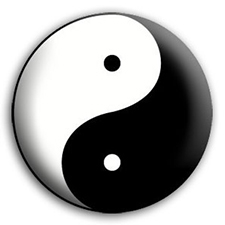
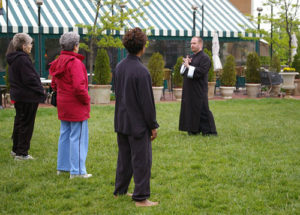
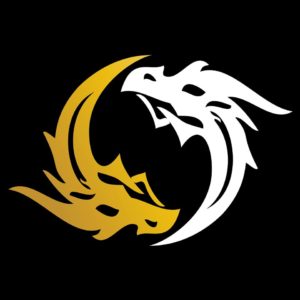







One thought on “Multiple Centers & Multiple Spheres in Taijiquan”